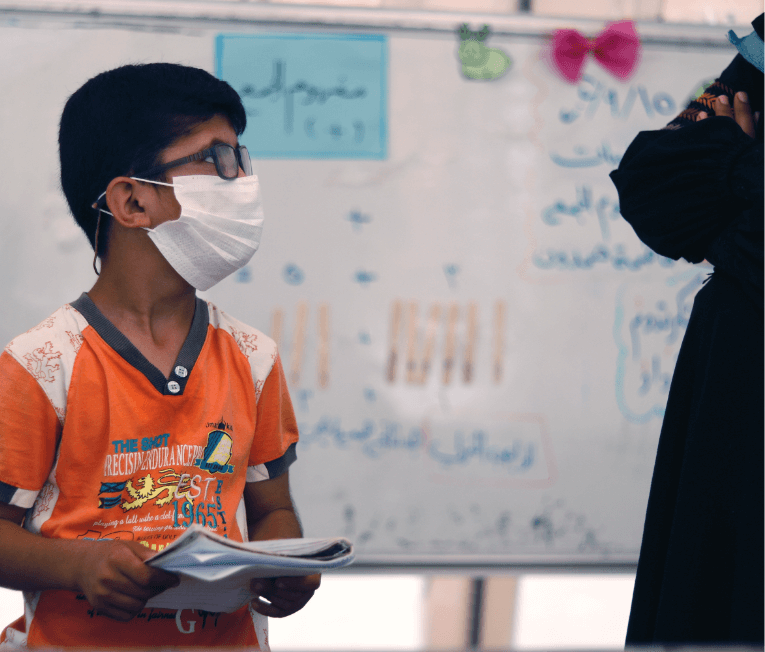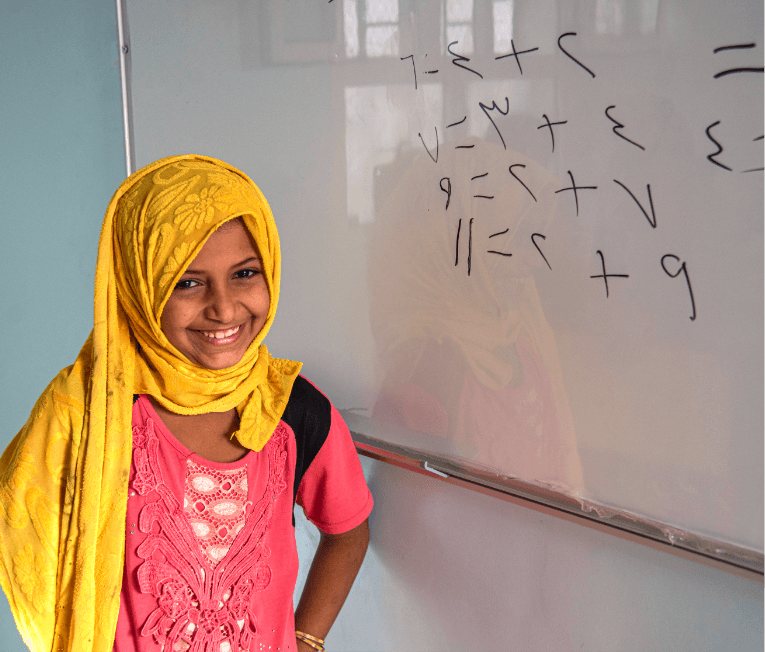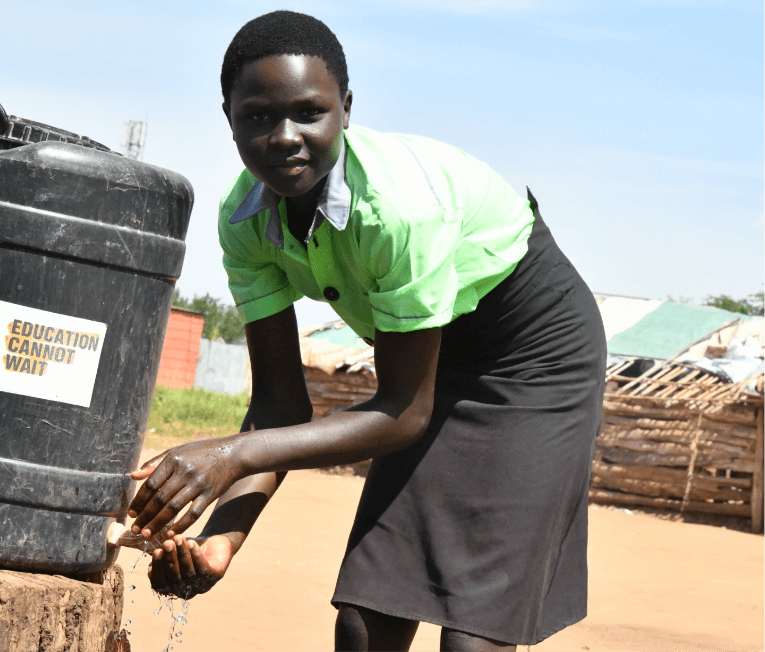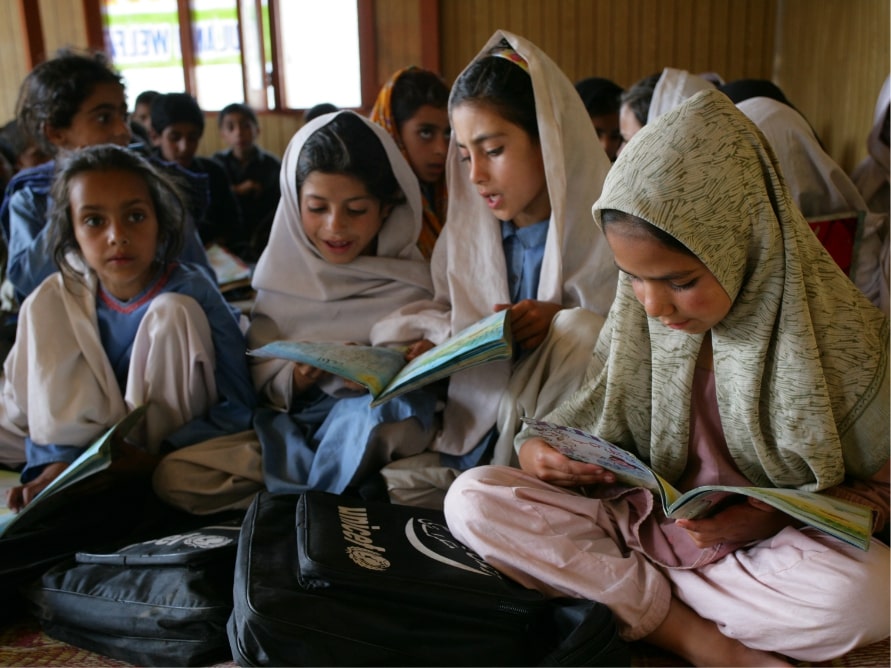Results for Children
ECW outcomes focus on access, equity and gender equality, continuity, quality learning, and safe and protective learning environments.
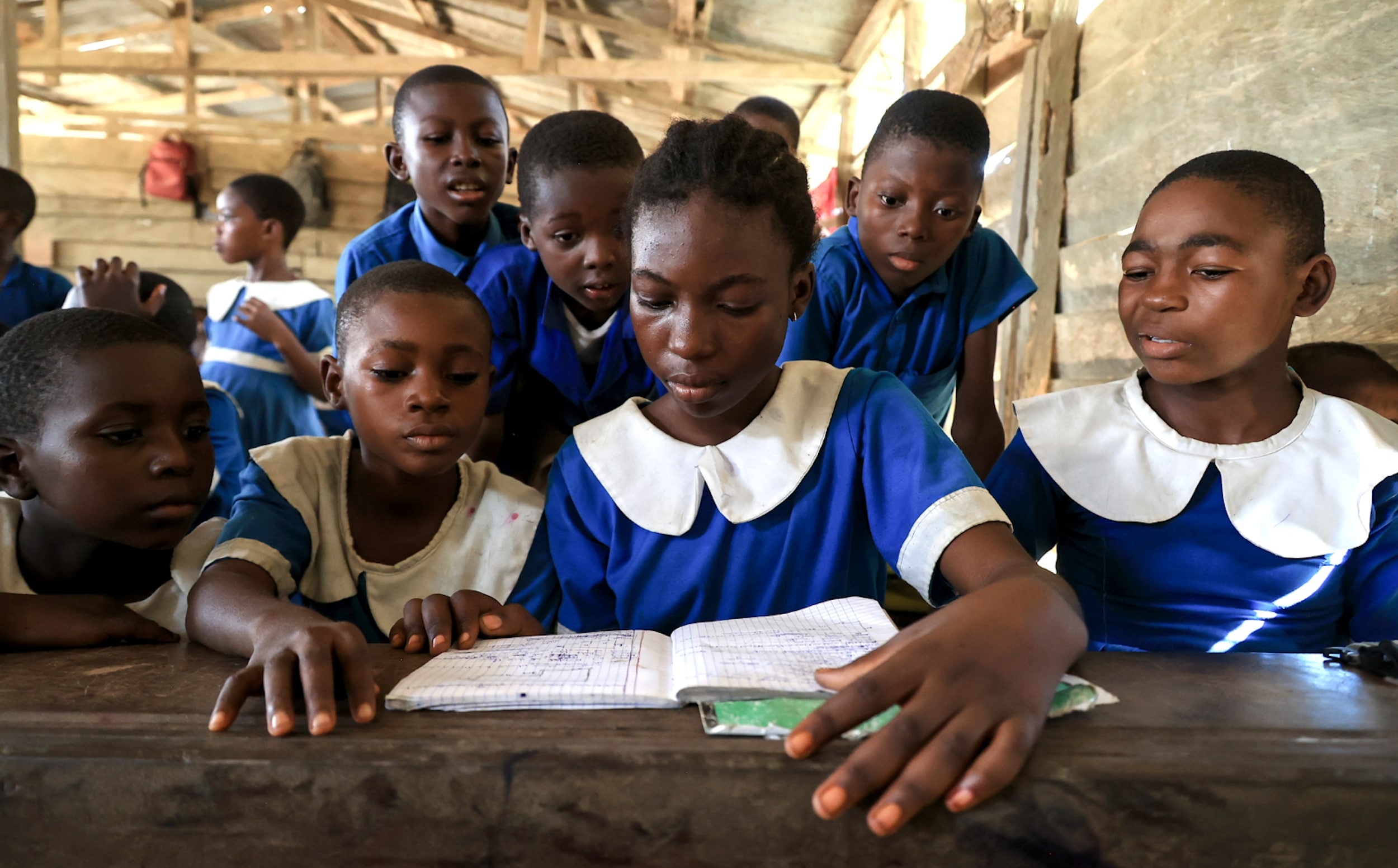
© ECW/Daniel Beloumou
© ECW/Cisse
Beneficiary Outcomes 1 and 3
Access and Continuity
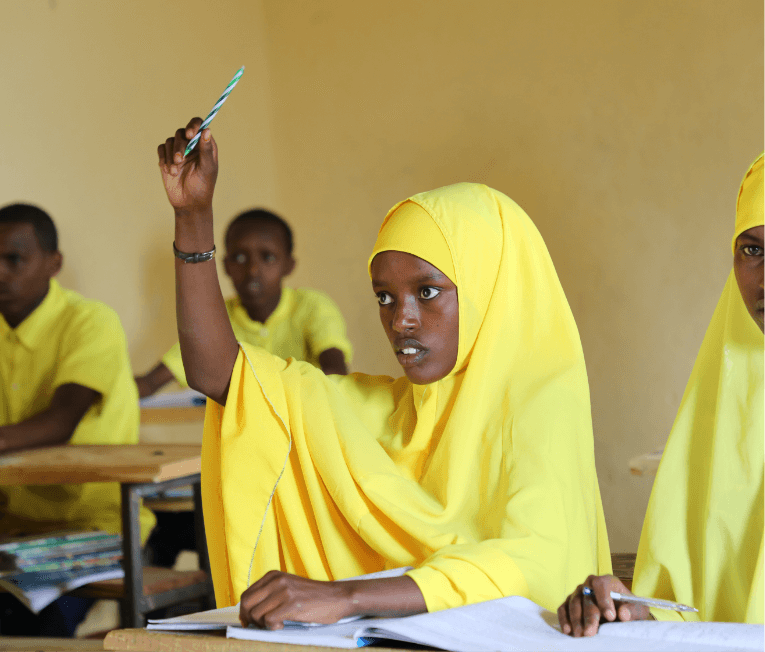
© Save the Children/Dereje/2021
Hanifa's Story
Remedial Classes Provide a Lifeline for 15-year-old Hanifa in Ethiopia
Read More →
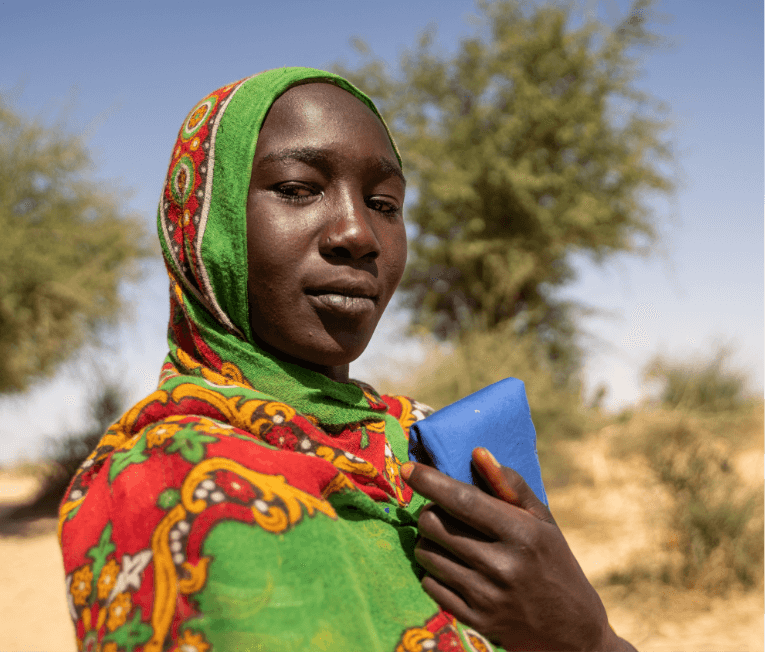
© Irene Galera/JRS Chad
Kaikai's Story
Safeguarding Menstrual Health With Dignity in Chad
Read More →
Increased Access
96% of ECW-supported programmes in 2021 provided evidence of an increase in levels of access to education.
Increased Continuity
97% of ECW-supported programmes in 2021 showed increased survival, transition or completion of crisis-affected children and youth.
Improving Completion and Transition
70% of programmes (including COVID-19 grants) reported transition rates of 50% or higher to the formal education system after completion of accelerated action programmes, remedial classes or catch-up programmes. Completion rates are slightly higher, with 78% of programmes enabling 50% or more of the children to complete their programme, education level or grade.
Dedicated Funding to Increase Access and Continuity
The seven MYRPs developed in 2021 dedicated US$21 million to increasing access and continuity of education among crisis-affected children. The figure represents 29% of these MYRPs’ total seed fund budgets.
Stronger Focus on Early-Childhood and Secondary Education
The share of children reached with early-childhood education increased from 5% in 2019 to 9% in 2021, and the share of children reached under secondary education increased from 3% to 11% for the same period.
Progress Highlights–Access
Number of teachers and administrators recruited and/or financially supported since inception
Number of classrooms (including temporary learning spaces) built or rehabilitated since inception
Number of children/youth (aged 3–18) reached with non-formal education programmes since inception
COVID-19 Data
11 million (51% Girls) by 2021
Number of households in ECW-supported communities receiving cash transfers for education since inception
Progress Highlights–Continuity
Percentage of ECW-supported programmes with increased survival, transition or completion of crisis-affected children and youth
97%
(11 MYRPs, 26 FERs)
Number of children (aged 3–8 years) reached with early childhood education services since inception
COVID-19 Data
3.5 million (44% girls) by 2021
Percentage of children reached by education level
Number of children (aged 3–18) who received quality school feeding since inception
Percentage of ECW-supported programmes with increased survival, transition or completion of crisis-affected children and youth
7
Afghanistan, Bangladesh, Iraq, Mali, Peru, Somalia and Uganda
© UNICEF/Frank Dejongh
Beneficiary Outcome 2
Strengthened Equity and Gender Equality
Changing social norms to address gender inequality
Of the MYRPs developed in 2021, 71% (5 out of 7) included a focus in their results frameworks on changing the social norms, attitudes and behaviours reinforcing gender inequality.
Reaching Children with Disabilities
ECW reached 34,191 children and adolescents with disabilities through active grants in 2021 (0.92% of all children reached).
Reaching forcibly displaced children
In 2021, ECW reached 1.1 million refugees (50% girls) and 412,000 IDPs (49% girls).
Supporting Girls' Education
Since inception, ECW has reached 3.3 million girls, representing 48.4% of the total children reached.
Progress Highlights
Percentage of ECW-supported programmes (having data) showing improvement vs. gender parity in access to education in targeted communities
92%
(6 MYRPs, 6 FERs)
Percentage and number of girls out of total children and youth reached by ECW since inception
COVID-19 Data
52% girls (16.2 million) by 2021
Percentage of women among teachers and administrators recruited/financially supported
*Percentage largely impacted by an Initial Investment (II) grant in Yemen that supported many more male teachers than female teachers. This project ended in 2019.
Percentage of children and youth with disabilities reached with ECW support (since the Fund's inception)
COVID-19 Data
0.2% children and youth by 2021
© ECW
Beneficiary Outcome 4
Quality Learning and Skills
Promising Levels of Learning
The share of MYRP programmatic funding allocated to improve the quality of education and learning levels of children has steadily increased – from 14% in 2019 and 19% in 2020, to 22% in 2021.
Teacher Increased Knowledge and Capacity
ECW has strengthened teaching capacity across various topic areas. In 2021, 26,835 teachers (52 per cent female) demonstrated an increase in knowledge, skills and/or performance.
Measuring Learning Outcomes
The number of ECW-funded programmes with information on levels of academic learning is growing, especially for MYRPs. Measuring social-emotional learning remains a challenge.
Progress Highlights
Percentage of ECW-supported programmes (having data) with increased learning outcomes for crisis-affected children and youth
100%
(21 FERs, 9 MYRPs)
Number of children (aged 3-18) reached with individual learning materials inception
COVID-19 Data
Number of teachers and administrators trained since inception
COVID-19 Data
Percentage of teachers trained per topic (2017-2021) including COVID-19 grants
- Emergency preparedness, DRR, risk management24%
- Mental health and psycho-social support27%
- Gender7%
- Inclusion5%
- Subject knowledge, planning and pedagogy26%
- WASH11%
Number of classrooms supported with materials to enhance the learning environment since inception
58,207
© UNICEF/Hill
Beneficiary Outcome 5
Safe and Protective Learning Environment
Improved Safety and Protection
All programmes (100%) that measured safety and protection reported improvements at the outcome level in 2021. Since inception, the share of MYRP budget allocated to safety and protection is about 17.5% for all MYRPs.
Emergency Preparedness and Disaster Risk Reduction
A total of 47,375 (46% female) teachers and administrators have been trained on emergency preparedness, disaster risk reduction and risk management since inception.
Improved Mental Health and Psychosocial Support
Since inception, the number of teachers trained on mental health and psychosocial support (MHPSS) topics has doubled, reaching about 54,000 (48% female) by 2021. 13,803 learning spaces supported by ECW feature quality MHPSS activities.
Progress Highlights
Percentage of ECW-supported programmes (having data) with increased levels of safety and protection
100%
(7 MYRPs, 22 FERs)
Number of teachers/administrators trained on the importance of WASH (without COVID-19 training)
Number of ECW-supported learning spaces where a code of conduct exists, is enforced, and teachers and communities are trained/informed on its application
Number of ECW-supported learning spaces featuring mental health and psychosocial support activities for children

